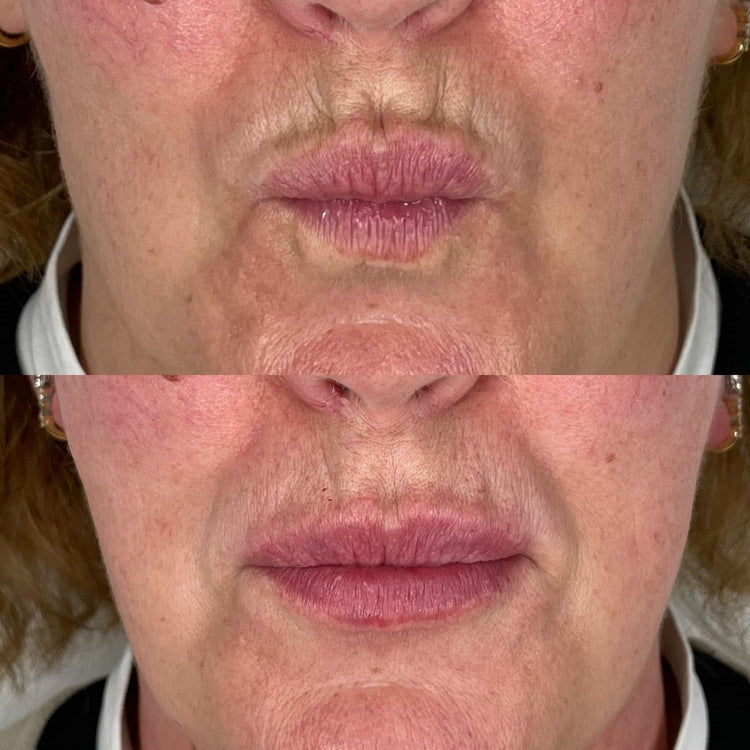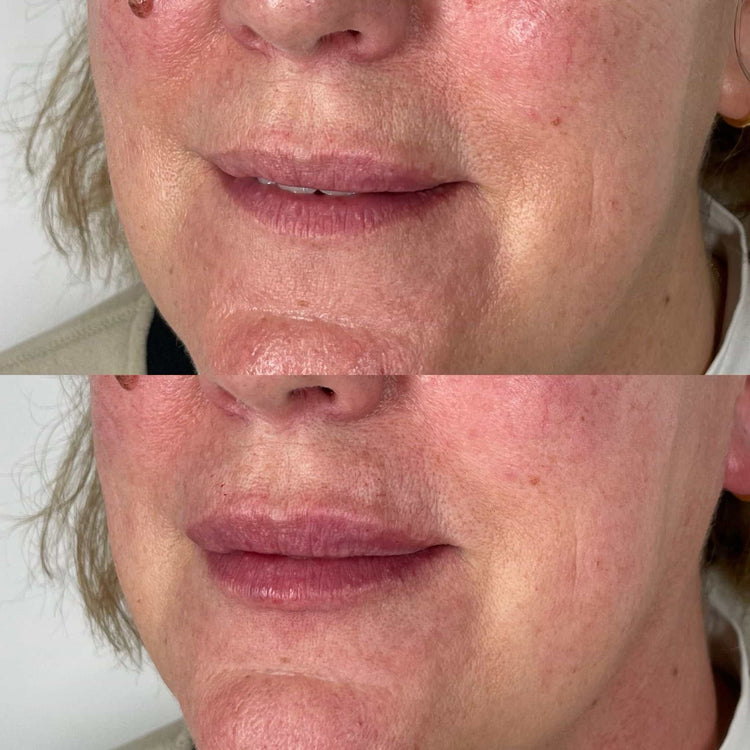Dermal Fillers vs. Botox
Navigating the world of non-surgical cosmetic treatments can be overwhelming. Two popular options, dermal fillers and Botox, both offer ways to enhance appearance but work in distinct ways. Dermal fillers add volume to areas like lips, cheeks, and under the eyes, smoothing wrinkles and restoring lost fullness. Botox, on the other hand, targets dynamic wrinkles caused by muscle contractions, temporarily relaxing the muscles to prevent lines from forming.
Muscle Relaxing Effects
Both dermal fillers and Botox are popular non-surgical treatments for addressing aesthetic concerns. While they share the goal of improving appearance, their mechanisms of action differ significantly.
- Dermal fillers work by adding volume to areas like lips, cheeks, and under the eyes, smoothing wrinkles and restoring lost fullness. They achieve this by injecting hyaluronic acid, a naturally occurring substance in the body that attracts and retains water.
- Botox, on the other hand, targets dynamic wrinkles caused by muscle contractions. It works by temporarily paralyzing the underlying muscles, preventing them from contracting and forming lines. Botox is derived from botulinum toxin, a neurotoxin that blocks nerve signals to the muscles.

Volume Restoration
Dermal fillers and Botox are both popular non-surgical treatments with distinct mechanisms of action. Dermal fillers address volume loss by injecting hyaluronic acid, a substance naturally found in the body that attracts and retains moisture. This plumps up areas like lips, cheeks, and under the eyes, smoothing wrinkles and restoring fullness.

Botox, conversely, targets dynamic wrinkles – those caused by repeated muscle contractions. It works by temporarily paralyzing the underlying muscles, preventing them from contracting and forming lines. Botox achieves this by using botulinum toxin, a neurotoxin that blocks nerve signals to the muscles.
Treatment Areas
Dermal fillers and Botox are both popular non-surgical treatments used to address different aesthetic concerns. Dermal fillers are designed to add volume and plumpness to areas of the face such as the lips, cheeks, and under the eyes. They achieve this by injecting hyaluronic acid, a naturally occurring substance in the body that attracts and retains moisture.
Botox, on the other hand, is used primarily to reduce the appearance of dynamic wrinkles, which are caused by repeated muscle contractions. It works by temporarily paralyzing the underlying muscles that create these wrinkles, preventing them from contracting and forming lines. Botox injections contain botulinum toxin, a neurotoxin that blocks nerve signals to the muscles.
Dermal Fillers vs. Microneedling
In the realm of non-surgical cosmetic enhancements, dermal fillers and microneedling present distinct approaches to achieving desired results. Dermal fillers utilize injectable substances to add volume and smooth wrinkles, targeting areas like lips, cheeks, and under the eyes. Microneedling, conversely, employs tiny needles to create controlled micro-injuries in the skin, stimulating collagen production and promoting a smoother, more youthful complexion.
Skin Resurfacing
In the realm of non-surgical cosmetic enhancements, dermal fillers and microneedling present distinct approaches to achieving desired results. Dermal fillers utilize injectable substances to add volume and smooth wrinkles, targeting areas like lips, cheeks, and under the eyes. Microneedling, conversely, employs tiny needles to create controlled micro-injuries in the skin, stimulating collagen production and promoting a smoother, more youthful complexion.
- Dermal fillers work by injecting substances such as hyaluronic acid into the skin. This plumps up areas like lips, cheeks, and under the eyes, smoothing wrinkles and restoring lost volume.
- Microneedling involves using a device with fine needles to create controlled micro-injuries in the skin. These micro-injuries stimulate collagen production, leading to improved skin texture, reduced wrinkles, and a more youthful appearance.
Collagen Stimulation
Dermal fillers and microneedling are both popular non-surgical treatments for improving skin appearance, but they work in different ways. Dermal fillers use injections of substances like hyaluronic acid to directly add volume to areas such as the lips, cheeks, and under the eyes.
This plumps up these areas, smoothing wrinkles and restoring lost fullness. Microneedling, on the other hand, stimulates the skin’s natural collagen production.
A microneedling device uses tiny needles to create controlled micro-injuries in the skin. The body responds to these injuries by producing new collagen and elastin, leading to improved skin texture, reduced wrinkles, and a more youthful appearance over time.
Downtime and Recovery
Dermal fillers and microneedling are both popular non-surgical cosmetic treatments that aim to improve skin appearance, but they work in distinct ways.
Dermal fillers utilize injected substances, often hyaluronic acid, to directly plump up areas like the lips, cheeks, or under the eyes. This instantly adds volume, smooths wrinkles, and restores a youthful contour. Microneedling, conversely, stimulates the skin’s natural healing processes.
A microneedling device creates tiny punctures in the skin, triggering collagen production and elastin synthesis. Over time, this leads to improved skin texture, reduced wrinkles, and a more even complexion.
In terms of downtime and recovery, dermal fillers typically have minimal downtime. Some swelling or bruising may occur, but it usually subsides within a few days. Microneedling may involve slightly more downtime. The skin might be red and sensitive for a few days following the procedure.
Dermal Fillers vs. Chemical Peels
Non-surgical cosmetic treatments offer various options to enhance appearance. Two popular choices are dermal fillers and chemical peels, each addressing different aesthetic concerns. Dermal fillers use injectable substances like hyaluronic acid to add volume and plumpness to areas like lips, cheeks, and under the eyes, smoothing wrinkles and restoring lost fullness. Chemical peels, on the other hand, exfoliate the skin by removing the outermost layer, revealing smoother, brighter skin beneath.
Skin Tone and Texture Improvement
Dermal fillers and chemical peels are popular non-surgical treatments used to improve skin appearance, but they work in distinct ways.
- Dermal fillers utilize injected substances, often hyaluronic acid, to directly plump up areas like the lips, cheeks, or under the eyes. This instantly adds volume, smooths wrinkles, and restores a youthful contour.
- Chemical peels, on the other hand, work by exfoliating the skin. A chemical solution is applied to the skin, causing it to peel away. This removes the outermost layer of skin, revealing smoother, brighter skin beneath.
Exfoliation Depth
Dermal fillers and chemical peels are both popular non-surgical treatments for improving skin appearance, but they work in distinct ways. Dermal fillers utilize injected substances, often hyaluronic acid, to directly plump up areas like the lips, cheeks, or under the eyes. This instantly adds volume, smooths wrinkles, and restores a youthful contour.
Chemical peels, on the other hand, work by exfoliating the skin. A chemical solution is applied to the skin, causing it to peel away. This removes the outermost layer of skin, revealing smoother, brighter skin beneath.
The depth of exfoliation achieved during a chemical peel varies depending on the type of acid used. Superficial peels target only the outermost layer of skin, addressing mild imperfections like sun damage and uneven pigmentation.
Medium-depth peels penetrate deeper into the skin, tackling wrinkles, acne scarring, and hyperpigmentation more effectively. Deep peels, the most aggressive type, remove multiple layers of skin and are typically reserved for treating severe wrinkles, deep scars, or precancerous lesions.
Suitable Skin Types
Dermal fillers are a popular choice for individuals looking to restore volume and smoothness to areas like the lips, cheeks, and under the eyes. They are generally suitable for most skin types but may not be ideal for those with active infections or certain medical conditions.
Chemical peels, on the other hand, offer exfoliation benefits, targeting issues like sun damage, hyperpigmentation, and fine lines. They are generally well-tolerated by a variety of skin types, but factors like skin sensitivity, existing skin conditions (e.g., rosacea or eczema), and medication use can influence suitability.
- How Often To Get Lip Filler - May 13, 2025
- Pet Play Fetish: Exploring Power Dynamics And Animalistic Role-Play - May 13, 2025
- Skin Injectables Near Ash, Surrey - May 12, 2025